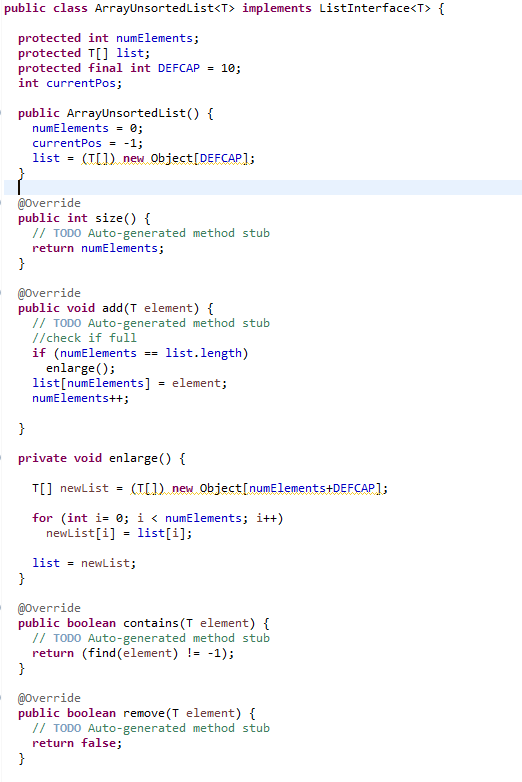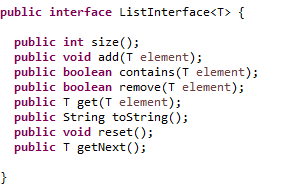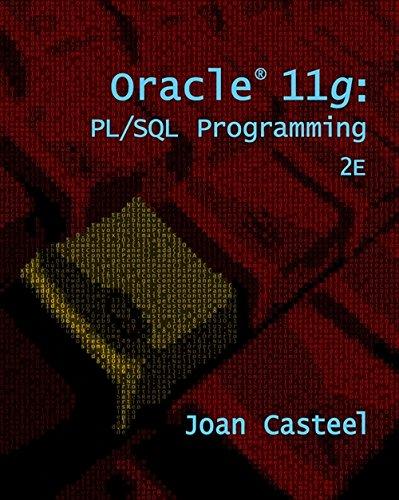Answered step by step
Verified Expert Solution
Question
1 Approved Answer
removeAll(T element) Similar to the remove() method, but in this case, remove all instances of the element found in the list. It should return true
removeAll(T element)
Similar to the remove() method, but in this case, remove all instances of the element
found in the list. It should return true if any element was successfully removed, false
otherwise.
Use
comments to document your algorithm and design decisions


public class ArrayUnsortedList
Step by Step Solution
There are 3 Steps involved in it
Step: 1

Get Instant Access to Expert-Tailored Solutions
See step-by-step solutions with expert insights and AI powered tools for academic success
Step: 2

Step: 3

Ace Your Homework with AI
Get the answers you need in no time with our AI-driven, step-by-step assistance
Get Started


